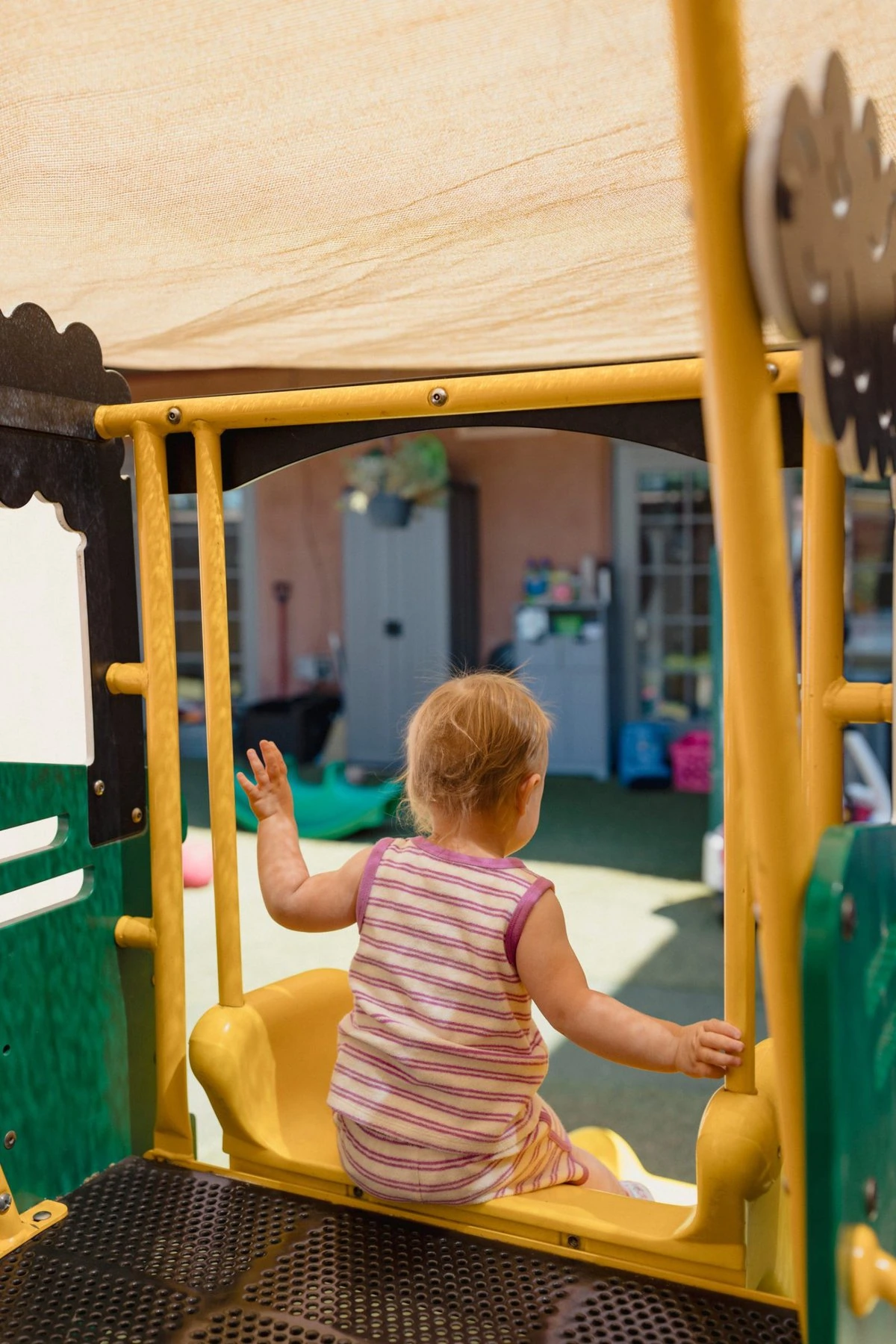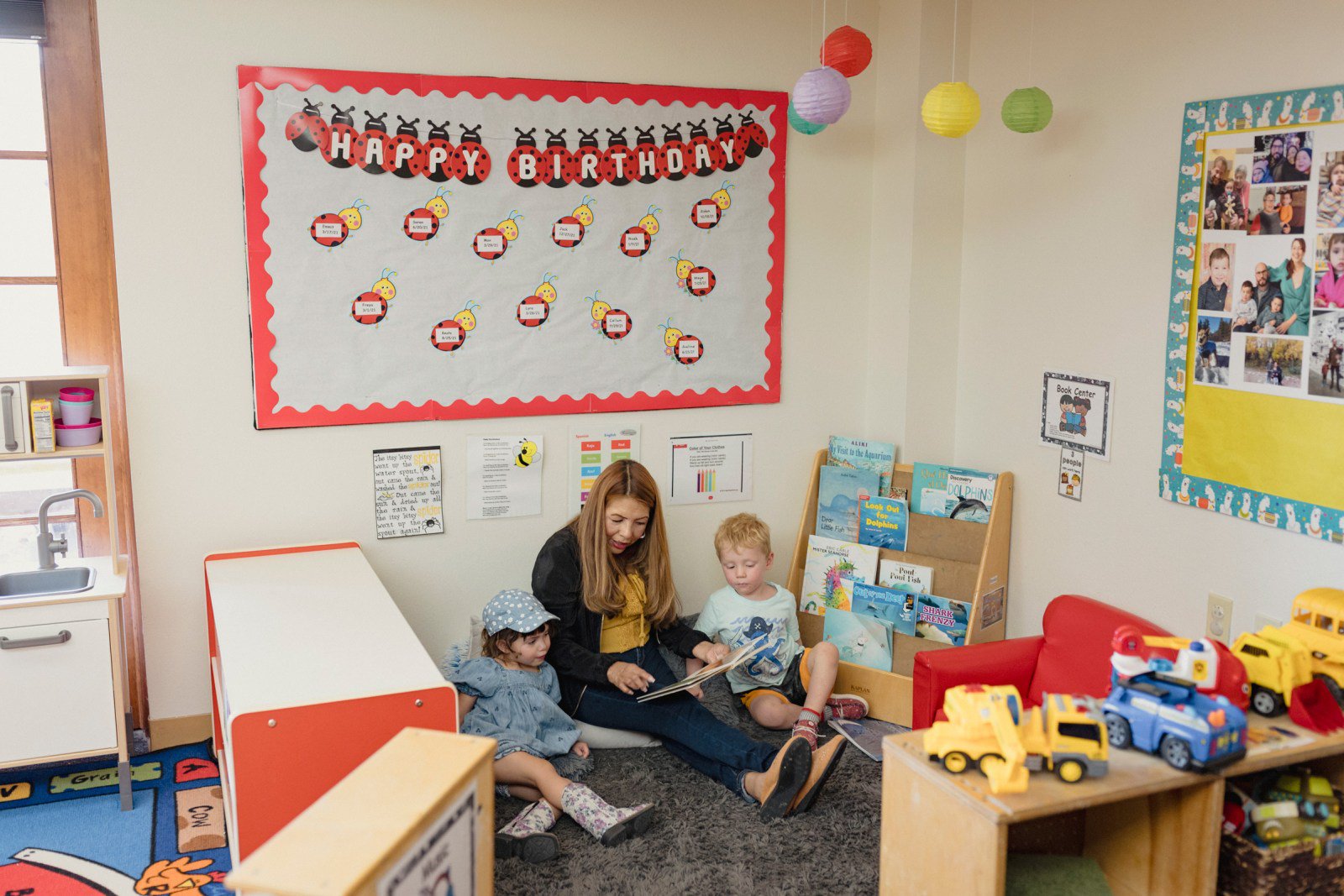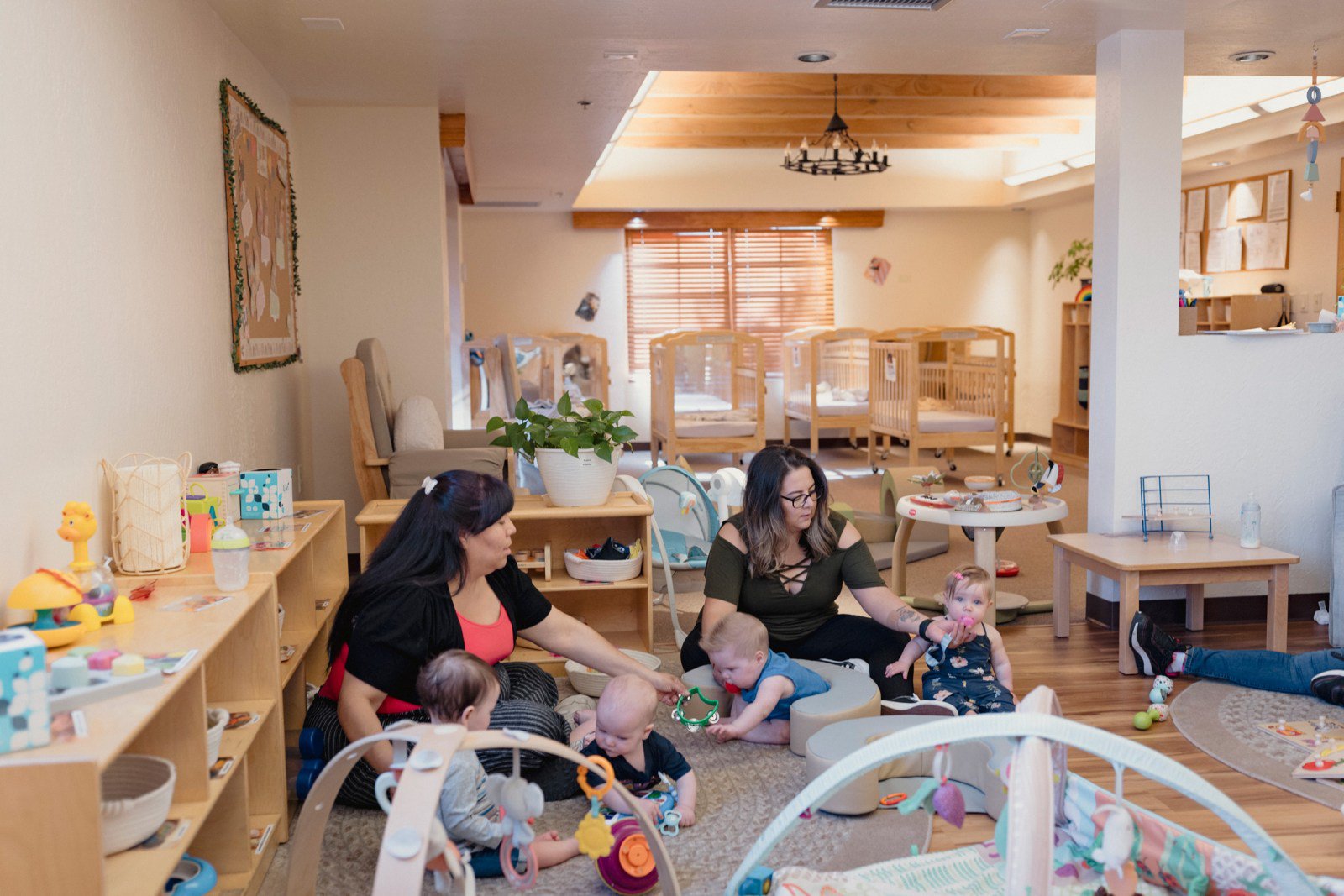This story originally appeared in High Country News.
After Geovanna Losito’s son was born in the spring of 2021, her mother took care of him while Losito worked remotely. But as her son grew, so did Losito’s worries.
Losito knew that soon, her mother, who is disabled, would no longer be able to pick her son up. And Losito knew that soon she would have to resume commuting one hour each way from her home in Albuquerque, New Mexico, to her government job in Santa Fe.
What Losito, 33, didn’t know was how she’d be able to pay for child care so that she could continue working. Losito, who supports her son and her parents — her father is a disabled veteran — was always broke at the end of the month but still earned too much to qualify for public assistance.

Then, in August 2021, New Mexico dramatically expanded its child-care subsidy program to include families earning up to 400 percent of the poverty line, making roughly half of the state’s children eligible. For a family of four, like Losito’s, that now includes households earning up to $124,800 annually. The state has also waived all co-pays, making child care free for qualified families.
Approximately 70 percent more New Mexico families are now eligible for free child care, according to the Urban Institute. When coupled with its other new policies — including permanent funding and higher provider pay — advocates say New Mexico is a model in early childhood education.
“The guiding star of the thing is ‘How can we make this as free as possible for as many people as possible?’” said Hailey Heinz, deputy director of the Cradle to Career Policy Institute at the University of New Mexico. “It’s as close as any states have gotten to trying to get at universal (coverage).”
New Mexico’s drive to be the best came from its frequent ranking as the worst: Earlier this year, the Annie E. Casey Foundation once again named it the worst state for child wellbeing, according to 16 different indicators.

“People feel acutely that there is an urgent problem to be solved,” Heinz said. “If we’re going to get serious about the wellbeing of children, one way to do that is to get really serious about the early years.”
Research shows that interventions targeted at ages zero to five are both critical and cost-effective. One Nobel Laureate economist found that early childhood programs can improve outcomes for disadvantaged children in education, health, income and behavior, ultimately resulting in a 13 percent return on investment.
So New Mexico advocates zoomed in on those first five years. With financial help from some large foundations, they began to drum up public support for early childhood policies. Studies and task forces and focus groups followed.
After years of work, the state’s voters elected Gov. Michelle Lujan Grisham on an early childhood platform in 2018. She quickly established the Early Childhood Education and Care Department, which brought all the state’s programs under a single umbrella. (Few Western states have similar agencies.)
To head the department, Lujan Grisham tapped Elizabeth Groginsky, who had previously helped turn Washington, D.C., into an early childhood leader. Groginsky “came in with so much knowledge,” Heinz said, and a “really thoughtful, smart, bold vision for how to pull lots of different policy levers.”
Then Covid-19 hit, sparking a national reckoning on the importance of child care — and unlocking federal money that enabled states to experiment. “New Mexico happened to be primed in many ways from all these years of grassroots advocacy,” Heinz said. “And ready to go big in ways that other states weren’t.”
One of the ways that it went big was with money — specifically, money that would continue when COVID relief funds ran out.
Weighed down by negative news?
Our smart, bright, weekly newsletter is the uplift you’ve been looking for.There was the Early Childhood Trust Fund, established just before the pandemic, which receives a small percentage of the state’s budget surpluses. Then, in 2022, 70 percent of New Mexican voters supported a constitutional amendment that dedicated a portion of the Land Grant Permanent Fund, the state’s largest educational endowment, to early childhood.
While the principal in both investment funds comes primarily from fossil fuels, as does roughly a third of the state’s recurring revenue, the accounts are insulated from that industry’s volatility. In boom years, the funds get padded; in bust years, they still generate a return on their investments. “It’s forward-looking in that it contemplates a future in which we won’t have as much oil and gas money as we do now,” Heinz said. In the meantime, high oil prices have helped the trust fund balloon from $300 million to more than $5.5 billion in just four years.
Heinz acknowledged not every state has such resources, but added: “Lots of oil and gas states are not choosing to invest this money in children. That, I think, is important to highlight.”
Though the free child care gets the most attention, some of New Mexico’s biggest changes have been on the provider side.
Previously, when a provider accepted a child-care subsidy, the state reimbursed them at a rate based on what the average area day care charged. But advocates say that amount rarely covered the true cost of business, leading some providers to refuse or limit subsidies.

So, in 2021, New Mexico followed D.C. and became the first state to base its subsidy reimbursement rates on the actual cost of providing child care. Its formula includes rate increases for quality, meaning that centers with lower staff-to-child ratios receive higher reimbursements.
Anne Liley, the director of First Presbyterian Church’s Child Development Center in Santa Fe, said that reimbursement rates for her center, which has the highest possible quality rating, have nearly doubled since the changes took effect. She used to get $800 per month per toddler; now she gets $1,500, which is more than her center’s private pay tuition of $1,250.
As a result, Liley no longer has to cap families with subsidies at 10 percent of her total client base. “We don’t care if you’re paying private tuition or if you’re getting tuition assistance,” she said. “This is a business model that finally makes sense.”

The updated reimbursement rates, based on child-care workers earning at least $15 an hour, could also boost equity in an industry that has historically relied on the free or underpaid labor of women, mainly women of color, said Kate Noble, president and CEO of Growing Up New Mexico, a nonprofit organization. Nationally, infant and toddler teachers earn an average of $10.86 an hour, according to the Center for American Progress, while more than a third of child-care workers are women of color.
By increasing wages, policymakers hope to generate interest in early childhood careers and thereby help ease worker shortages. “The sector is strained,” Noble said. “To pretend that it’s anything different would be false.” She and other advocates want the state to ramp up capacity through workforce development and even more robust funding.
Like most New Mexico parents, Losito, the Albuquerque mom, wasn’t involved in the behind-the-scenes policy talk. One day, she just got an email informing her that she might qualify for a child-care subsidy. Her son now has full-time day care, at no cost to her. New Mexico’s new program, she said, “is how we can afford to have a normal life.”



